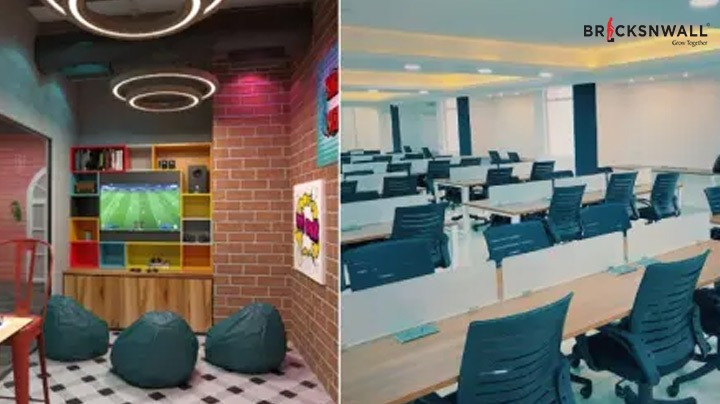Co-working Spaces – Coexistence in Business
Koheli

Flexibility is the keyword in every conversation
today. Today's millennial culture especially takes towards flexibility and the
comfort it provides in all terms of life. The term and concept have a solid
meaning in various aspects, both public and personal; in this context, the
translation of flexibility works towards co-working spaces. Any
individual residing in Tier-1 cities of Delhi, Mumbai or Bangalore, or any other
foreign city will be very familiar with the concept of co-working spaces, the
most important of which is its rising importance in the current global
scenario.
India presently states claims for 850 such
co-working spaces all over the country – while a majority are focused in the
cities mentioned above that act as the prime centers for the peak of
globalization and start-ups, close to 179 of such spaces are placed in Tier-2
and Tier-3 cities, such as Kochi, Chandigarh, and Ahmedabad, . The concept and
its application have seen a growth that was unprecedented but highly
advantageous for the rising start-up and entrepreneurial culture in India; the
country is only second to the number of such places, coming behind China. From
2016-19, the deals made on co-working spaces rapidly increased from US$ 49.7
million to US$ 96.5 million, with investments on various scales and levels of
operation. Examples of well-known cow-working spaces rampant in India include
WeWork based in New York (renamed as The We Company after setting out an IPO
prospectus), 91 Springboard, Coworks, and InstaOffice.
Co-working spaces boast of the high levels of
collaboration because of the various levels of interaction deeply seated into
the culture – the flexibility and various contacts made in participation of
such a movement has inspired many start-ups and inspiring companies. The
flexibility assures a breather to the already stretched out funds of most
companies as compared to single office spaces in highly crowded cities. In a
country where, until recently, working in small spaces automatically meant that
the company was a small start-up with barely enough funds to scrape together a
moderate office, this has now transformed into companies of all sizes and
natures coming together to intake in the co-working space culture due to its
affordable rents, well-maintained infrastructure, much-needed networking and
communication with peers followed by the many business opportunities of
progress.
The few issues faced by the organizers of
co-working spaces include operational challenges in limiting the costs incurred
while attempting to not compromise on the quality of the services offered
within these spaces. These services are also looking to standardize their
amenities and declare common prices in the interest of offering better and
unified experiences with the least issues. Such an experience constitutes
enough turnaround time for the resolution of all the issues of the client and
satisfying the demands and ensuring enough opportunities for the blue-collar
stuff. Collaboration is a key them of capitalization for such institutions and
forms a major reason as part of the business opportunities that many companies
look forward to – this involves signing up for life-changing mentorships,
initiating collaborations with the right number of organized sessions and
events for interactions and people management. All of these make sure that the
plate is full for the upcoming future concerning co-working spaces.
Another factor to look out for is the minimum
occupancy level for some level of operating profit in the progression of
co-working spaces. Occupancy reaches different peaks at different times of the
year for different seasons, so organizations are tasked with following the
trend levels and maintaining a minimum crowd while working on a strategy to
extend the same services to other geographical regions with the same
principles. A contradiction works itself in the context that while the rental
commitments of those in charge of organizing the space are long-term
commitments extending to possibly 10 years or so, while their clients have very
short-term commitments to these organizers which leaves the situation open to a
lot of uncertainty, mismatches in demand and supply along with inefficient
optimization of the capital available. This explains the recently recognized
fact, supported by research, that while the demand and the recognition of
co-working spaces have increased and they are being praised for their role in
improving the business culture, only less than 40% of such working spaces are
profitable.
Involving in co-working spaces, therefore, has its
tricks and long trips before profitability – buying long and selling short, as
it is popularly put forward. However, it remains a steady fact that co-working
spaces are a profitable mine that provides diamonds in the long run. For
example, Awfis, a co-working space organizer, followed the managed aggregation
model (a straight lease); under this, there are possibilities of cooperation
with owners of underutilized commercial ideal for these services after striking
a no minimum guarantees deal. The owner of the space should then make
adjustments according to the demand and appropriate fittings for the
infrastructure. Only 30% of the seats are under a straight lease basis, where
the organization has taken up properties in this manner on rent. In this manner,
existing space is utilized effectively without attempting to create a heavy
overhead that adds to the pre-existing space – both risks and financial assets
required are on the lower side of the spectrum. Another manner of ensuring
providing such spaces is differentiated on some level, certain organization
ensures that the amenities provided apart from the space which includes
allowing for business opportunities through events meant for sprucing up such
communication, investment opportunities, facilitating B2B opportunities most
essential to young and small start-ups as well as assuring mentors for the
professionals just getting started on their field. All these assist the
companies working together to increase their networking circle and
opportunities.
The best comparison to co-working spaces would be
that it works like Ola and Uber, but for real estate. Building on this fact,
flexible working spaces could not find more advantageous conditions in real
estate as it is at present – the industry is looking at cheaper costs in real
estate that also builds the concept of fractional ownership that again adds to
the available flex workspace. Commercial real estate in its traditional
form has now been disrupted with such co-working centers; where reports account
for 325-330 operators of such spaces within these cities and areas involved in
the transaction have been steadily increasing from 52000-77000 square feet
(2018-19). 2020 can see a number close to 13 million people working in such
facilities and offices are getting ready to incorporate such office space
within their facilities as well. The affordable pricing provides a huge
advantage and rents as low as 10000 per seat for a month, which all adds up to
fewer utilities required and costs of setting up operations into motion, with
the added advantages of grabbing business opportunities and sessions for
all-round development.
By 2018, the total leasing market saw 10%
exclusively under co-working spaces. The US and Europe were quick receivers of
the trend and was rapid in the adoption of this culture, but this took time in
India as the country believes in the idea of personal space when working in an
office and sharing spaces did not mean flexibility and adapting, rather the
lack of funds and apparent failure of the enterprise, leading to a lot of
hesitation as concerned with the business model. Even freelancers and
participants of the gig economy expect the flexibility of the work environment
while being provided the opportunity to build connections through networking
and communication with similar-minded people in such spaces. It helps that
these spaces are much more economical and lessens the financial burden on the
working individuals. Co-working spaces offer creativity in the various themes
they strive to adopt as well as the idea of a unique space that does not always
have to be professional to seem like the company is financially successful –
creativity and entrepreneurial behavior can also progress in a simple homely
setting or even a nature-themed workshop, even among counterparts who also have
anger issues that you met a stress-free event. There are promises, and
fulfillment of these promises, on the topic of sustainability – shared
facilities and workspaces maximize the utility of space and optimizes what is already
available that is practically the essence of the concept. Adopting other green
initiatives also seem to gather more support among such facilities due to
similar minded people, with enterprises and well-established companies
following the trend also.
India gets the opportunity to grab the title of
being the youngest start-up nation with more than 70% of the founders of
various companies being under the milestone of 35 years – co-working spaces
will serve the need of increasing the creativity, communication,
collaborations, ideas and opportunities for networking; added to this is the
element of flexibility which remains crucial to this debate in adapting to the
latest methods and way of enhancing productivity and using technology for
progressing along the global pace while still being friendly to the pocket of
an aspiring entrepreneur.
Many organizations are looking to increase the
number of seats and share of commercial
properties under the tag of co-working spaces, thus decreasing
the problem that new companies often face under the situation of lacking space
to meet. There are plans on taking full advantage of Tier-2 and Tier-3 cities,
now that Tier-1 cities are reaching their full capacity and potential. These
cities are looking to add at least 8.5 million seats by 2020 – existing
expansion that is happening at a rapid pace, a demand from many clients that do
not look to be diminishing any time soon, increasing encouragement and participation
from existing real estate owners with a good risk appetite and support from the
co-working operators can see the area under this arrangement even triple on the
existing capacity.
Such plans also set forward the inspiring cycle of setting forward spaces by utilizing real estate, encouraging ideas and entrepreneurs within their safe spaces which leads to the development of the industry and associated economies of scale. Many others look forward to the opportunities that will be presented once the present organizations build up the existing capacity, saturate the existing market and construct the foundation, before looking to capitalize on the emerging demand after this stage, considering there is a 33-35% year-on-year growth to look out for. This ticks many checkboxes and organizers and clients, as well as future aspirers of their own companies, must keep on top of this exciting new opportunity.




